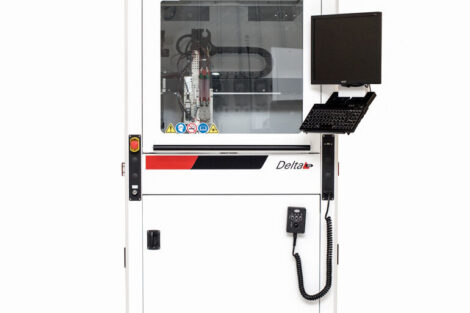It’s here at last. Of course, in theory everybody is in favor of making the world a cleaner place for our children and grandchildren. But a confusing raft of legislation has been created for manufacturers from all these environmental initiatives. It might be that manufacturers have been so busy preparing for July’s lead-free deadline that they have ‘back-burnered’ any concerns on other legislative issues. But the danger in this approach is that any forthcoming regulations might take the manufacturer by surprise. A long term and far-reaching view of the legislation affecting our industry is vital. Now is the time to understand and prepare for the implementation of next year’s legislation on VOCs. A lot of people in the industry think that VOCs are going to be banned beginning October 2007: this is not the case!
EC Directive 1999/13/EC, otherwise known as the Solvent Emissions Directive (SED), aims to reduce emission of Volatile Organic Compounds, (VOCs) into the environment from certain industrial processes. The legislation is stricter in Europe than in some other parts of the world. But the good news is that the Directive does not mean that solvent-based conformal coatings and cleaning agents will be ‘banned’, or that all coating after October 2007 must be carried out with VOC-free materials.
The Solvent Emissions Directive legislation only applies to certain defined operations. The ones of most concern to the electronics industry are:
- The manufacture of coatings
- Other coating activities, which appears to cover PCB conformal coating, since vehicle coating, coil coating, winding wire coating and wood coating are all defined in different and separate sections
- Surface cleaning (of products) using the more hazardous solvents. These solvents include carcinogenic or mutagenic solvents carrying the R45, R46, R49, R60 or R61 risk phrases, and halogenated VOCs carrying the R40 phrase
- Other surface cleaning (with less hazardous solvents)
To be subject to SED regulations, the amount of solvent involved in these processes has to be above a certain threshold value, which may vary locally across Europe. Manufacturers operating below these threshold values are outside the scope of the SED, and can continue exactly as they are.
Even after October 2007, operators can continue to exceed these thresholds, as long as they have a permit from their responsible authority and can show a plan for reducing solvent levels. The bad news is that the deadline for applications to use this solvent reduction approach has already passed. Operators now have to either
- meet an emission value limit (EVL) in waste gases and a fugitive EVL; or
- meet a total EVL for VOCs
But don’t panic! If your VOC consumption currently exceeds the threshold, suppliers such as Electrolube will be happy to work with you to specify your alternative materials with lower solvent levels, where possible.
Additionally, remember – it’s the VOC emissions rather than the substances themselves which are being limited. Rather than replacing your tested and approved materials, it may be possible to consider solvent reclamation equipment and techniques by adapting production lines, developing manufacturing techniques and improving waste management and recycling practices. This might actually be more cost-effective than re-specifying materials, particularly if you operate in automotive, aerospace or military applications.
The environmental legislation can be daunting but a long-term view will help to flag forthcoming regulations in good time. The SED, when examined, is far less intimidating than it first appears and it actually affects fewer organisations to a lesser extent than you might at first think. Working with suppliers on finding viable alternatives can make the change trouble-free.
Dr. John Humphries
EPP EUROPE 406
Share:










